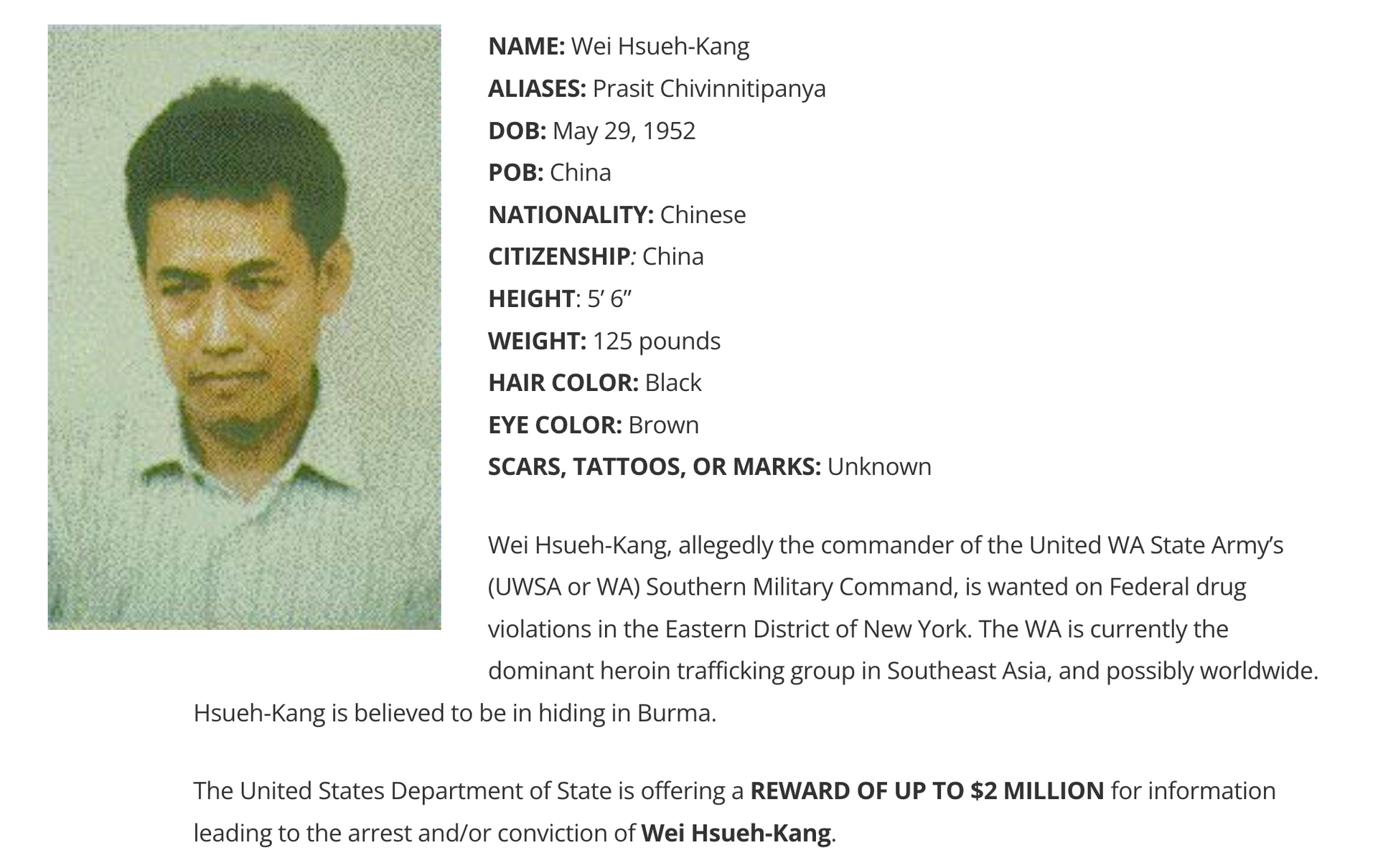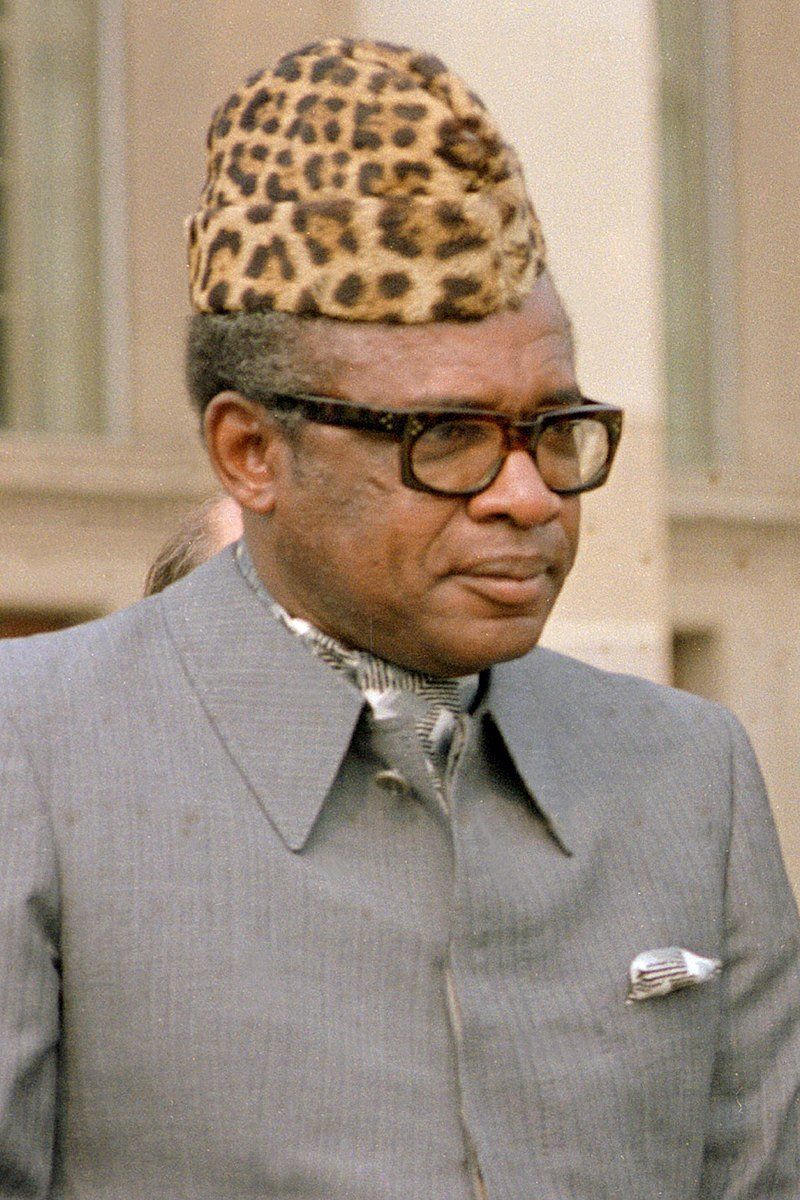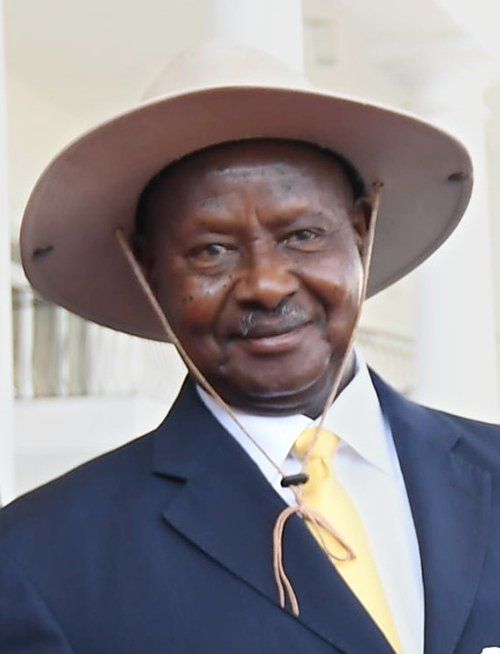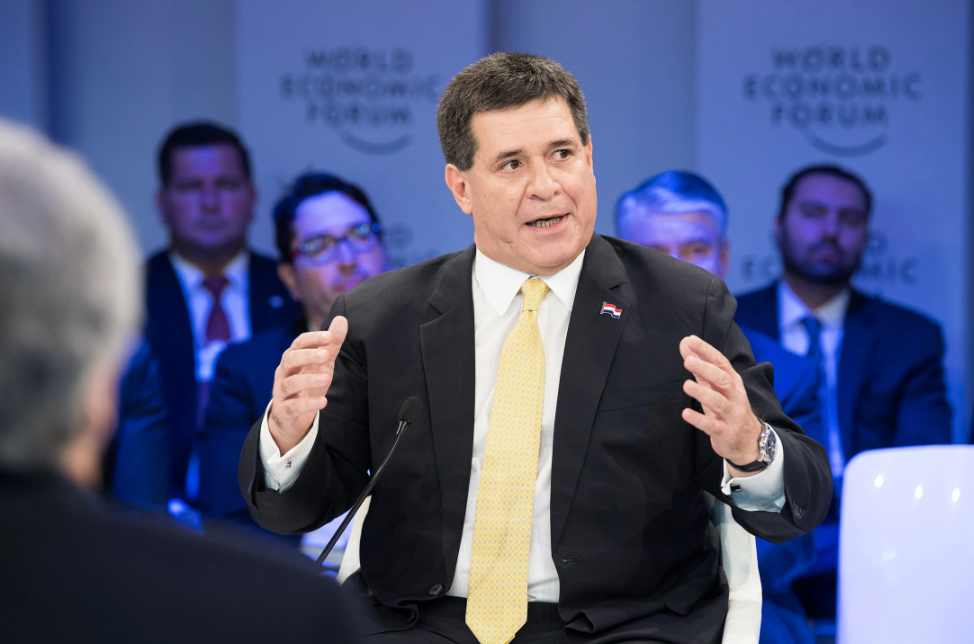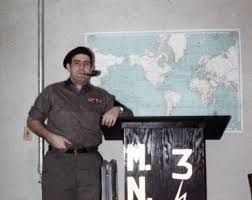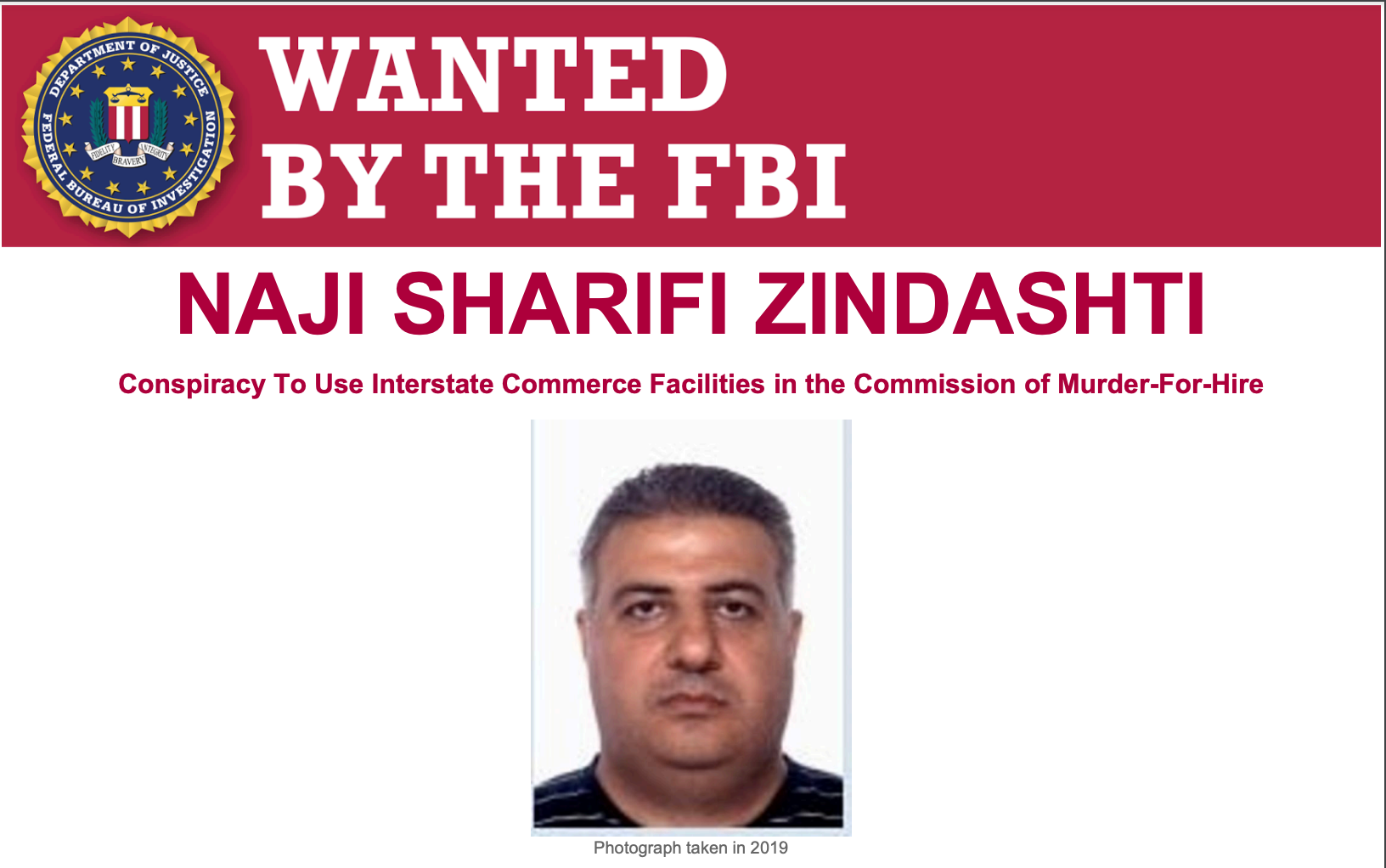American Foreign Policy Helped Manufacture the World's Refugee Crisis
September 3, 2022
Decisions by US Lawmakers Have Fueled so much Suffering and Bloodshed Throughout these Regions
The Internal Displacement Monitoring Centre (IDMC) recently released a report with some staggering statistics about the state of the world. In 2021, there were 53.2 million people who were Internally displaced people (IDPs) or domestic refugees within the borders of their countries because of violence and warfare. The average American citizen takes the peaceful existence within our borders for granted. Americans generally relish their country's role as the world’s policeman and view it as the reigning force of stability. However, the same people are rarely aware of how U.S. foreign policy (primarily the Cold War and the War on Terror) created pervasive problems with long-lasting effects. By no means is America responsible for all of the world’s problems, but we need to examine our government’s part in these catastrophes.
Here's a look at the ten countries with the highest number of “internally displaced” citizens or domestic refugees and a further examination of the U.S. role in each country. (Part 1 examines one through five.)
1 - Syria - 6.7 million internal displaced citizens
Syria entered a civil war in March 2011 after President Bashar al-Assad’s government forces responded violently to public protests. This conflict may be more accurately described as a proxy war. Russia and Iran are aiding the Assad government; the U.S., the U.K., Saudi Arabia, the UAE, and Turkey support the rebels.
The UN has documented over 350,000 deaths. Anyone who has taken a cursory look at the situation has likely read about the horrific war crimes committed by the Assad regime, such as barrel bombing and mass hangings. But, Western media has done little to expose the war crimes committed by the rebels.
The Syrian opposition consists of different organizations with varying motivations. The U.S. government insisted that they were supporting “moderate” rebels, but there’s extensive documentation that says otherwise. Some of them were directly tied to al Qaeda and ISIS. Former CIA director, David Petraeus, asserted that the U.S. should support members of Al Qaeda to fight against ISIS. Max Blumenthal wrote a brilliant book, The Management of Savagery, which detailed U.S. links with extremist rebels.
The U.S. recognized the Syrian rebel coalition, Syria’s National Coalition, in 2012 as the legitimate government even though their links with terrorists were well known. These organizations didn’t even try to hide the connections. Twenty-nine militant groups signed a petition in that same year condemning the U.S. designation of Al Nusra, an al Qaeda affiliate, as a terrorist organization. Their petition even declared that “we are all Al Nusrah” and urged their supporters to raise Al Nusrah’s flag.

Al Nusra Front (Karam al-Masri/Flickr)
In that same year, Hillary Clinton received a State Department email notifying her that “(Al Qaeda) is on our side in Syria.” Likewise, a FOIA request from Judicial Watch exposed a report by U.S. Defense Intelligence Agency which stated that “the Salafist, the Muslim Brotherhood and AQI (now ISIS), are the major forces driving the insurgency in Syria.”
In 2013 Obama authorized a CIA program, Timber Sycamore, to arm and train Syrian rebels. According to Brown University’s Cost of War project, the U.S. spent $54 billion over the next five years making it one of the most expensive covert operations in U.S. history. While speaking at the Institute of Politics at Harvard in 2014, Joe Biden tried to shift some of the blame on our allies (Turkey, Saudi Arabia, UAE). Biden said they were “so determined to take down Assad” that they had launched a “proxy Sunni-Shia war” funneling “hundreds of millions of dollars and tens of thousands of tons of weapons into anyone who would fight against Assad. Except the people who were being supplied were al-Nusra, and al-Qaeda.”
One year after arming proxies via Timber Sycamore and seeing how Syria descended into chaos, Obama ordered direct U.S. military action. There initially weren’t U.S. ground troops, but he authorized airstrikes in Syria to target ISIS fighters. That’s classic American foreign intervention, i.e. create the problem and then act as the savior.
U.S. airstrikes against ISIS were not welcomed by the Syrian government. An active-duty Army Captain, Nathan Smith, later filed a lawsuit against then-President Obama contesting the legality of the U.S. mission because it was never approved by Congress. The case later carried over to the Trump administration. The federal court system ultimately refused to rule on the case stating that the judiciary didn’t have the jurisdictional power to overturn the president’s decision. Needless to say, that’s a terrible state of affairs when the president can essentially act as a dictator and order military action with no accountability. (You can hear more about the case on the Rackets Podcast.)
President Trump differed from all other previous presidents. His predecessors often hid behind rhetorical causes such as defending “democracy” or “human rights” to justify using military force for foreign interventions. Trump openly celebrated U.S. imperialism as though it added to a tough guy persona. He later faced political pushback after ordering most of the U.S. troops to withdraw from Syria in 2017 because it jeopardized the Kurdish coalition (SDF) who fought alongside the U.S. (Mind you this is a group linked with the PKK, a designated terrorist organization, and reports of child soldiers.) Afterward, Trump noted that around 400 would remain. He said, “But we did leave soldiers because we’re keeping the oil. I like oil. We’re keeping the oil.”
A politically-connected U.S company, Delta Crescent Energy, received a one-year sanctions waiver in 2020 to drill in Syria under U.S. military protection. President Biden did not extend that sanctions waiver. However, the Syrian government alleges that the U.S. is still plundering its oil. This month, the Syria Oil Ministry stated that U.S. forces “steal up to 66,000 barrels every single day from the fields occupied in the eastern region,” They provided surveillance footage from the Russian military showing a convoy of several tankers taking the oil to Iraq.
2. Congo – 5.3 million internally displaced citizens
The Second Congo War was the deadliest war since WWII with a death toll of over 5.4 million people. It took place from 1998 to 2003 and many of the factors involved in that war are still present today.
Before addressing the Second Congo War, it’s important to note that America truly destroyed Congo’s first attempt at independence. Congo had been subjected to horrific conditions by the Belgian King Leopold II. As many as 10 million people died as a result of his tyrannical reign.
On the day of their independence, Patrice Lumumba (the first democratically-elected Congolese leader), gave a speech in 1960 that is widely viewed as the reason for his eventual assassination. Lumumba simply stated facts about the suffering and colonialism imposed upon his people.
The U.S. soon afterward conspired with the U.K. and Belgium to assassinate Lumumba. Former President Eisenhower ordered the CIA to kill Lumumba because he viewed him as an ally of the Soviet Union. A firing squad not only killed Lumumba; his body was mutilated and then dissolved in sulfuric acid. A Belgian officer kept his finger and tooth as “a type of hunting trophy.” This June (over five decades later) the Belgian government returned that tooth to Lumumba’s family as a pathetic gesture as a means of amends.
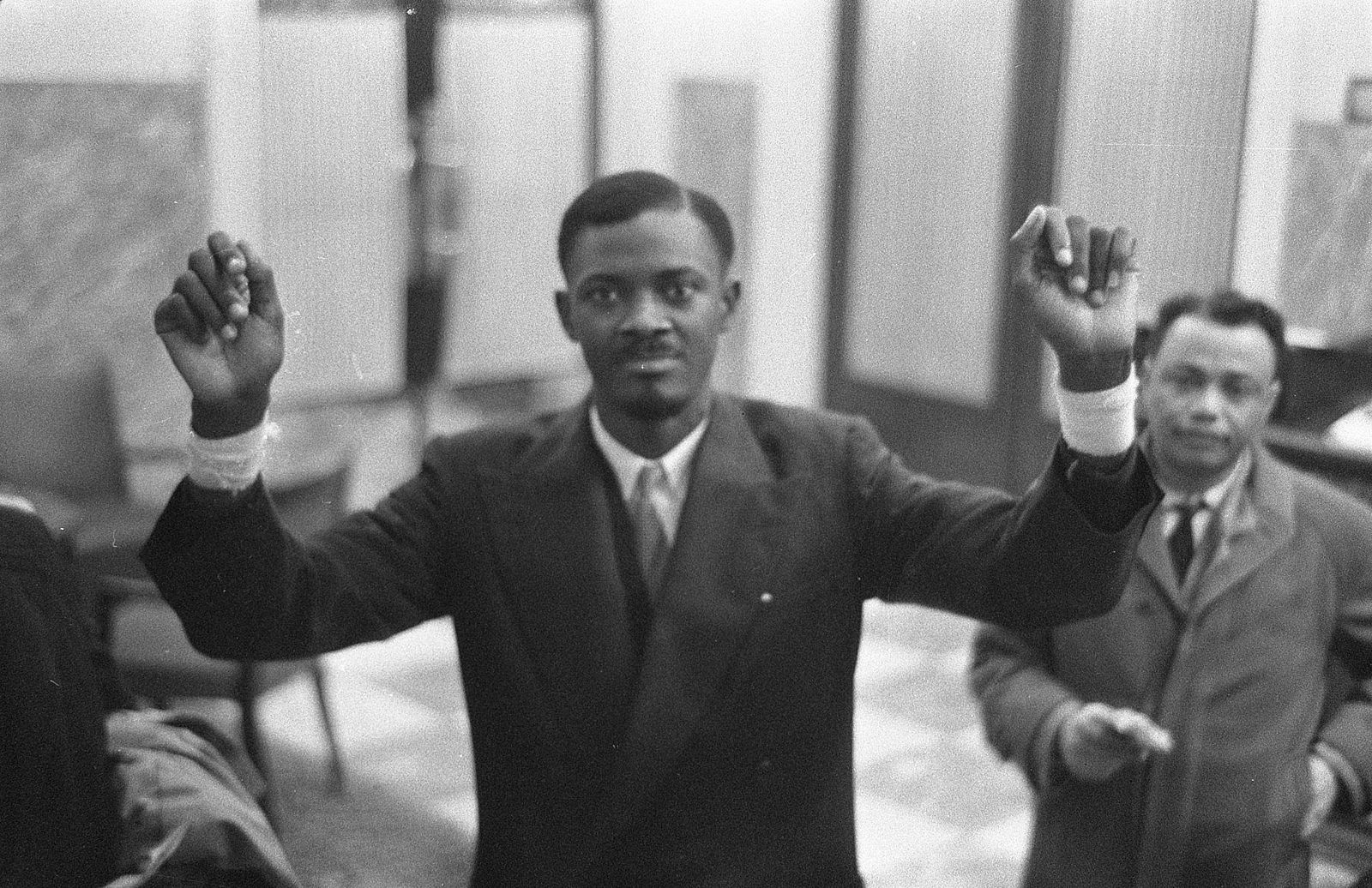
Patrice Lumumba (Wikipedia)
The Democratic Republic of Congo is one of the wealthiest nations in the world in terms of natural resources (gold, tin, coltan, uranium, tungsten), an estimated $24 trillion. For instance, the uranium for the Hiroshima and Nagasaki nuclear bombs came from a Congolese mine. The workers toiled in dangerous conditions for terrible wages. And not much has changed since then. Very little of the country’s tremendous resource wealth has trickled down to the people, in part, because anti-colonialist leaders such as Lumumba were never able to exercise their agenda.
A dictatorship led by Mobutu Sese Soko (1965-1997) followed. Western foreign powers enabled his glaring corruption. Mobutu embezzled billions from public coffers and allowed foreign corporations to exploit the country’s vast resources.
The Second Congo War was essentially a proxy war fought by various African nations within the borders of the Democratic Republic of Congo (DRC). The DRC’s main aggressors were its neighbors Rwanda and Uganda, both strong U.S. allies led by longtime dictators, Paul Kagame and Yoweri Museveni. Both leaders have received extensive military from the U.S. In fact, Kagame attended the military college at Fort Leavenworth in Kansas.
Multiple foreign countries’ competing motivations led to the Second Congo War, but one common factor was a desire for the DRC’s vast resources. A 2002 UN report detailed extensive use of sexual violence against women, human trafficking, and conscripting children into military service. The report also detailed rampant profiteering by Rwandan, Ugandan, and Zimbabwean army officers growing rich from looting the country’s gold, diamonds, cobalt, copper, and coltan. Likewise, numerous Western foreign corporations joined in the exploitation. The same report listed 85 companies from the U.S., Europe and South Africa that took part in this shameful oppression.
Justice for the Congolese people has been slow and lackluster. In February of this year, the UN’s International Court of Justice (ICJ) ordered the Ugandan government to pay $325 million to the DRC for crimes against humanity committed two decades ago. The reparations are for “the loss of life, rape, recruitment of child soldiers, displacement of civilians…looting and plundering of gold, diamonds, and timber.”
The Second Congo War officially ended, but the plundering of resources and support of rebel groups with the DRC by outside foreign actors hasn’t. The U.S. Department of Treasury estimates that over 90% of the DRC’s gold is smuggled out of the country, primarily to Uganda and Rwanda, by armed rebel groups. The Treasury sanctioned a Belgian businessman, Alain Goetz, whose gold refinery in Uganda seems to be one of the main destinations. Goetz is at arm’s length with the inner circle of Uganda’s dictator, Yoweri Museveni, and even reportedly receives protection from his armed forces. Yes, the American government has sanctioned Goetz, but it has done nothing to cut off the head of the snake that benefits from this conflict resource. The U.S. has never taken strong action against Museveni as he is considered a strong ally in the War on Terror.

Alain Goetz (Twitter)
There’s even less accountability for the authoritarian leader of Rwanda, Paul Kagame, who once won the Clinton Global Citizen Award and the American Academy of Achievement. Again, it appears that Alain Goetz is the middleman enabling conflict gold to be exported throughout the world. According to a report by The Sentry, Rwanda’s exports of gold increased 755% over the following after the government joined in a partnership with Goetz to refine gold presumably smuggled from the DRC.
The after-effects of the Second Congo War still linger today. Rwanda has recently stepped up its aggression in the DRC. The Rwandan-backed rebel group, M23, laid down its arms in 2013. However, in the last few months, they’ve resumed their aggressions and an estimated 79,000 people have been displaced from their homes. To this day, Rwanda’s government refuses to admit that it supports the M23 rebels, but extensive evidence says otherwise, thus linking it with atrocious war crimes.
3. Colombia - 5.2 million displaced citizens
Colombia has quietly been the host of America’s Cold War aggression. The average American thinks of the violence in Colombia and connects it with the War on Drugs. That is a somewhat accurate description, but that is also part of the branding by the U.S. government. In 2000, Congress passed a bill, known as Plan Colombia, which allowed the U.S. to provide the Colombian government with over $10 billion of military aid for counternarcotics efforts. Plan Colombia hasn’t been an effective anti-drug strategy, but it has helped the Colombian government to fight Colombian communist rebel groups.
American defense contractors obviously profit from this initiative, but it was U.S.-based oil companies that spent millions of dollars lobbying in support of Plan Colombia. Those companies and their workers have legitimate security concerns about terrorism committed by communist rebels in Colombia. The sponsor of the bill, Paul D. Coverdell, didn’t mince words with his intentions; the bill had little to do with countering drugs and much more to do with protecting U.S. corporate interests in Colombia.
For over five decades (1964-2016), Colombia’s civilians have been caught in the middle of a civil war between the government’s forces and the communist rebels fighting to overthrow the government. According to the recently released report by a Colombian Truth Commission, the prior numbers were incorrect. The Civil War resulted in over 460,000 deaths. Roughly 80% of those victims were civilians. Another 8 million people were displaced.
The vast majority of the main rebel group, the FARC, laid down their weapons in 2016, but a few thousand of their members are dissidents who remain dedicated to warfare and organized crime. Likewise, the communist rebel group, ELN, remains active in the country and is accurately designated as a terrorist organization.
The U.S. continues to arm this country’s government even though it has a horrible human rights record. The truth commission report found that 5,733 members of the left-wing political party, the Patriotic Union, were killed between 1984 and 2016. In short, the Colombian government has extensive ties with right-wing paramilitary groups that committed mass atrocities. A truth commission found that Colombia’s government forces and its paramilitary groups committed the vast majority of the Civil War’s massacres.
A typical scenario involving these paramilitaries took place in a rural town, Mapiripán, in 1997. Over one hundred paramilitary fighters surrounded the town and singled out community members who they viewed as “communist sympathizers.” Even the slightest connection was considered a death sentence, such as merely a vendor selling water to a rebel. Everyone was forced to watch as the paramilitaries tortured and eventually dismembered these people with chainsaws and machetes. The violence lasted for five days and the military ignored calls for help. The exact number of victims is unknown, in part because their bodies were tossed in the Guaviare River, but experts say at least 30 died, with the highest estimate at 77.

The United Self-Defense Forces of Colombia (Autodefensas Unidas de Colombia) (AUC) - http-//ojosparalapaz-colombia.blogspot.com)
What’s arguably more sadistic is how several Colombian entrepreneurs and multinational foreign corporations swooped in to profit from the conflict resources in Colombia. For instance, an Italy-based corporation, Poligrow Ltd, benefited from the landgrabs committed in Mapiripán. Researchers estimate that as much as 15% of the land in Colombia has been stolen by the paramilitaries in coordination with powerful business interests and politicians.
Several U.S.-based corporations have been implicated with the paramilitaries. Chiquita Banana pled guilty and paid a fine of $25 million in 2007 for making $1.7 million in payments to terrorist groups in Colombia. Undoubtedly, the payments to the communist groups were extortionary. However, the payments to the paramilitaries were not as clear. Internal company documents show that the company felt that they couldn’t “get the same level of support from the military” as they could from the paramilitaries. They killed and intimidated labor rights and union activists. In other words, their interests were aligned.
The paramilitary groups officially disbanded in 2006, but they’ve simply rebranded under different names known as BACRIMs. In other words, the government labels them as criminal groups, not right-wing death squads. Even though the Colombian government denies that there’s any connection to its military or proxies, Colombia remains the most dangerous country in the world for liberal organizers with 87 activists killed in 2022 alone.
This isn’t a matter of the American government making a poor choice in its foreign allies. The U.S. government has blood on its hands as it was just as complicit. For instance, Human Rights Watch issued a report detailing how the U.S. Department of Defense and CIA coordinated with the Colombian military in 1991 to target and murder Colombian civilians who were not actual rebel enemy combatants. They were people suspected of being “communist sympathizers.”
The American judiciary system isn’t any better. A large group of Colombians sued Chiquita Banana under the Alien Tort Statute, which dates back to 1789. That statute allows non-U.S. citizens to file charges against corporations or individuals for violation of international law. Unfortunately, the U.S. federal judge ruled that the court didn’t have jurisdiction to try the case.
Time and time again, there have been horrific scandals involving the Colombian government and the U.S. government looking the other way. The most symbolic example is the “false positives” scandal. To keep the funding from the United States, the Colombian military felt quota-driven pressure to show a high kill count of communist rebels. As a result, when they couldn’t find actual enemy combatants, they simply killed innocent civilians and framed them to be communists. As many as 6,400 people were killed. Their victims were often people on the fringes of society, i.e. homeless people, and drug addicts, who were lured into isolated locations with promises of job prospects only to be killed in staged executions to look like rebel fighters.
4. Afghanistan – 4.3 million displaced citizens
This country has suffered through over three decades of foreign military occupation. Three decades! The Soviet Union invaded in 1979 after a coup deposed their favored dictator, Nur Mohammed Taraki. Over 30,000 Soviet troops promptly stormed the country to install a new puppet dictator, Babrak Karmal.
Zbigniew Brzezinski exemplifies the hubris of American foreign policy. He was Jimmy Carter’s National Security Advisor. He wrote to Carter that he wanted to induce the USSR into its own “Vietnam war.” His goal was to bait the Soviet Union into a costly, prolonged war by funding Islamic rebels to fight in Afghanistan.
The French news outlet, Le Nouvel Observateur, interviewed Brzezinski was interviewed in 1998 about the blowback from arming extremist groups who eventually became al Qaeda and spawned the Taliban. He said, “What is more important in world history? The Taliban or the collapse of the Soviet empire? Some agitated Muslims or the liberation of Central Europe and the end of the cold war?”
At the time, Brzezinski wasn’t aware that the 9/11 attack on the Twin Towers would later occur on 9/11. Nonetheless, he failed to factor in the Afghan people in his rationalization. Their nation was caught between two empires vying for geopolitical power. Roughly 1.3 million Afghans were killed during the Soviet occupation, along with 5 million more people forced into refugee status.
Most Americans have the “Charlie Wilson’s War” view of the Soviet invasion of Afghanistan. In other words, the general belief is that America responded to Soviet aggression, which is not entirely true. It was five months before the Soviets invaded when President Jimmy Carter authorized a covert program in 1979 (Operation Cyclone) to arm and train the Mujahideen “freedom fighters.” Carter implemented that program with an initial budget of $500,000.
Initially, the CIA provided Chinese, Egyptian weapons. It also from funneled its aid through Pakistan to provide a level of plausible deniability. However, this support became more of an open secret. Reagan expanded the operation to the tune of billions of dollars in aid. The Mujahideen freedom fighter cause even gained congressional support in 1984 with a $50 million allocation. It became a popular issue widely supported even through pop culture. Remember Rambo 3? The plot was shaped around Sylvester Stallone teaming up with the Mujahideen to defeat the Soviets. That film was released a month after the Soviet Union agreed to a troop withdrawal.

Rambo 3 (footage)
The CIA deferred to the Pakistani intelligence agency (ISI) when choosing which rebel leaders to support. That was a disastrous decision. Gulbuddin Hekmatyar held the most extremist views and he received the most assistance of the group, over $1 billion in weaponry. He, along with other Mujahideen leaders, flourished from opium trafficking, but the American government protected them from prosecutions.
The “freedom fighters” of today often turn into the terrorists of tomorrow.
Hekmatyar, along with other Mujahideen leaders, toppled the Soviet-aligned government in 1992. However, they never formed a functioning central government and the country descended further into civil war with the different Mujahideen leaders vying for power. Hekmatyar was the worst offender and armed with copious amounts of sophisticated foreign weaponry, he often indiscriminately bombed Kabul killing tens of thousands of civilians. Upon CIA direction, Hekmatyar even launched attacks outside of Afghanistan in two Soviet republics, Tajikistan and Uzbekistan.

Mujahideen fighters (Wikipedia)
Roughly 35,000 Muslim radicals from around the world joined the Mujahideen and the most notorious member was Osama Bin Laden. He was less a fighter and more of a fundraiser for the Mujahideen. He went on to establish al Qaeda. There’s no publicly-available information that directly ties Bin Laden to the CIA, but both entities were clearly swimming in the same direction. He had a somewhat open media profile during the Soviet invasion.
The Taliban provided safe haven for Bin Laden after fleeing Sudan due to U.S. government pressure. It seems unlikely that the Taliban would have come into existence if not for the U.S. support of the Mujahideen. Millions of Afghan refugees fled the country in the 1980s to escape the war. Many of the Taliban’s founders were refugees who as youths were educated in Saudi-financed schools in Pakistan, known as madrassas, which taught an extreme form of Islam. These schools were breeding grounds for terrorism. The Taliban literally means “students of Islam,” which is an homage to their upbringing.
Al Qaeda committed several acts of terrorism before 9/11, but there had never been an attack on that scale, particularly on U.S. soil. Of course, an American military response was expected, but what followed wasn’t necessary. Ironically, Zbigniew Brzezinski wanted to drag the Soviet Union into a costly war like Vietnam, but the U.S. war in Afghanistan made the Vietnam War pale in comparison.
The anti-war activist, Scott Horton, published a brilliant book reviewing America’s numerous blunders in the Afghanistan War. There are too many takeaways for this format, but here’s some key information. The Taliban agreed to hand over Bin Laden to stand trial, but that never happened. Instead, America wanted a show of force. Over 176,000 people died and the war led to millions of refugees.
Bin Laden also wanted to bait America into a Vietnam-like war and he accomplished it. He said:
“All that we have to do is to send two mujahedeen to the furthest point east to raise a piece of
cloth on which is written al-Qaeda, in order to make generals race there to cause America to suffer human, economic, and political losses without their achieving anything of note other than some benefits for their private corporations.”
There were only a few hundred members of Al Qaeda at the time of 9/11. That number has grown exponentially since then. America’s foreign invasions have been the exact recruiting tools that Bin Laden wanted.
5. Yemen – 4.3 million displaced citizens
There is a proxy war in Yemen that follows along religious lines. The Sunni monarchies of Saudi Arabia and the UAE are fighting the Houthi rebels in Yemen. Iran, a Shia-majority country, supports the Houthis (a Shia sect), albeit at a significantly lower level.
This war stems primarily from a 2014 coup in which the Houthis took power. The war in Yemen started in 2015 and it’s been labeled by the UN as the world’s worst humanitarian crisis. The UN estimated that 377,000 Yemenis have died. However, most of these victims have not been killed in combat. Seventy percent of them are children under the age of five. This is a result of an air and naval blockade imposed by Saudi Arabia and the United Arab Emirates (UAE) that is blocking food, drinking water, and medicine to the civilians in Yemen. Another 23.7 million Yemenis are in need of humanitarian assistance. (Nearly 80% of its population.)

A mother and her child in the Al Dhale'e Internally Displaced Persons (IDPs) Camp in Yemen. (UN)
Western media has described the war effort against the Houthis as the “Saudi-led coalition,” but that’s far from the case. The U.S. had the power to end this crisis immediately. The Saudis and the UAE are entirely dependent upon the American government’s logistical support, intelligence resources, weaponry, and training. The U.S. Department of Defense (DOD) provided Saudi Arabia and the United Arab Emirates (UAE) with $54.6 billion of military support since 2015.
The bombing campaign over Yemen is primarily executed by Saudi pilots who were trained by the American military, flying in planes built by American manufacturers, and guided by shared intelligence from the U.S. government agencies. The House Permanent Select Committee on Intelligence heard testimony asserting that fact. Bruce Riedelsenior, fellow and director at the Brookings Institution who spent thirty years working for the CIA explained that “only the United States of America and to a lesser extent the United Kingdom continue to provide the kind of support that allows this war to go on.” It’s obvious from the outside looking in that the Saudis and the UAE can’t sustain their war effort without foreign assistance. For instance, The New York Times reported that both nations needed to recruit soldiers (many of which are children) from war-torn Sudan. Likewise, the UAE leaned on Blackwater founder, Erik Prince, to outsource hundreds of Colombian mercenaries as well.
The Houthis have committed human rights violations and war crimes, but the war in Yemen is truly asymmetrical. Since 2015, the Houthis have killed 59 Saudi Arabian civilians via missile and drone strikes. In contrast, Saudi coalition forces have conducted over 25,000 air raids in Yemen that killed over 10,000 civilians and injured another 9,000. This bombing campaign with weaponry produced by Lockheed Martin and Raytheon often target civilian infrastructure. That includes attacks on schools, cell phone towers, food processing plants, water treatment facilities, hospitals, and more. That is a deliberate strategy of repeated war crimes to slowly kill the civilian population and it's part of why there was an outbreak of cholera that infected over 1 million Yemenis.
You’d like to think that Congress debated at length about the pros and cons of engaging in such a conflict. However, America casually entered into this war without congressional approval; the Obama White House simply offered a press release. “President Obama has authorized the provision of logistical and intelligence support to GCC [Gulf Cooperation Council]-led military operations.” The Obama administration continued to authorize multi-billion arms sales to Saudi Arabia despite internal documents showing that the administration fully knew that it was complicit in war crimes.
Again, Barack Obama craved the image of a humanitarian, but his actions were far different from the image. When questioned about the war crimes in Yemen, his press secretary simply passed the buck, "I would refer you to the Saudis.” On the other hand, Trump didn't care about the human violations. He viewed the Saudis as an opportunity to brand himself as an "America first" jobs creator and dealmaker. He infamously held up a poster-board labeled “12.5 BILLION IN FINALIZED SALES TO SAUDI ARABIA” for the White House press corps during the Saudi Prince/de facto leader's (Mohammed bin Salman) visit in 2017.
Most of the media gave Obama a pass, but Trump's smug imperialistic persona prompted more negative news coverage of the Yemen war. Over time, the cruel, preventable nature of this war prompted Congress in 2019 to pass the first-ever invocation of the War Powers Act of 1973. The war powers have shifted far from the original constitutional mandate in which Congress decides whether to go to war, not the president. In 2019, Congress demanded that President Trump end his support for the Saudi/UAE war effort in Yemen. However, Trump later vetoed that bill, which was yet another reminder of how far the Constitution no longer resembles its original intention.
President Biden promised to end the war in Yemen in his first foreign policy speech, but his actions haven’t matched the rhetoric. The Biden approved additional aircraft sales to the UAE. In fact, this position doesn’t even make political sense. The liberal commentator, Thom Hartmann, pointed out that Trump threatened Saudi Arabia with cutting off military support in 2020 if the gulf monarchy didn’t decrease oil production so that gas prices would increase. The Saudis complied.
While we’re experiencing record gas prices and inflation, Biden has tried to persuade the Saudis to increase production to get gas prices down. However, reports show that the leaders of Saudi Arabia and the UAE initially refused to accept Biden’s phone calls. Based on Biden’s recent visit to Saudi Arabia, it doesn’t seem that he pressured the kingdom to change its ways with Yemen.
In April both warring sides agreed to a truce. This month, they agreed to extend the truce for two more months, but this agreement seems tenuous at best. Unfortunately, the Saudis and UAE haven't been restricted in any meaningful as the Biden administration he approved a $5 billion weapons deal for nations this month.
